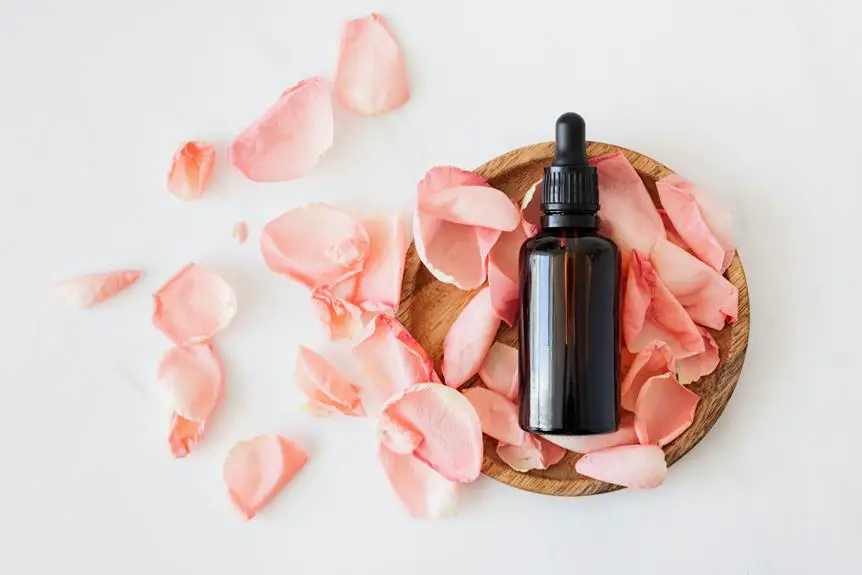Wondering how long E6000 glue takes to cure on different fabrics?
E6000 glue is a versatile adhesive that bonds well to various materials, including cotton, denim, silk, polyester, wool, nylon, and leather. Understanding the curing times on different fabrics is essential for mastering its application.
Whether you're crafting, repairing, or creating, knowing how long E6000 takes to set on specific fabrics can elevate your projects to a professional level.
Get ready to delve into the specifics of E6000 glue's curing process on a range of fabrics, so you can confidently tackle any project with precision and skill.
Key Takeaways
- Different fabrics have different curing times for E6000 glue, ranging from 24 to 72 hours.
- Factors such as temperature and humidity can impact the curing time, with warmer temperatures and lower humidity promoting faster curing.
- Proper surface preparation, including cleaning and roughening the fabric, is important for optimal adhesion and reducing curing time.
- It is recommended to avoid handling or washing the fabric during the curing process to ensure the glue fully cures and adheres properly.
Cotton
E6000 glue's curing time on cotton varies depending on the humidity and temperature of your work environment. Cotton adhesion with E6000 glue can be a great choice for various crafting and DIY projects. When using E6000 on cotton fabric, it's important to consider the specific curing time for this particular material.
The curing time for E6000 glue on cotton is influenced by environmental factors. In a low humidity and moderate temperature setting, E6000 may take approximately 24 to 72 hours to fully cure on cotton fabric. However, in high humidity or lower temperatures, the curing time might be extended.
It's crucial to ensure that the cotton fabric is clean and free from any residues before applying the E6000 glue. Additionally, applying pressure to the glued surfaces and allowing sufficient drying time is essential for optimal adhesion.
Understanding the fabric-specific curing time for E6000 on cotton empowers you to achieve strong and durable bonds in your crafting endeavors.
Denim
When using E6000 glue on denim, it's important to consider the curing time and adhesion to denim fabric.
Understanding how long it takes for the glue to fully cure on denim, as well as its ability to adhere securely to the fabric, will help you achieve the best results for your denim projects.
Let's explore the specific points related to using E6000 glue on denim and how it interacts with this particular fabric.
E6000 on Denim
You can apply E6000 glue on denim for a strong and durable bond. When used on denim, E6000 provides excellent adhesion and creates a lasting bond.
After applying the glue to the denim fabric, it's important to allow for sufficient curing time. The curing time for E6000 on denim is around 24 to 72 hours, depending on the thickness of the glue application and environmental factors such as temperature and humidity.
For the best results, ensure that the denim surface is clean and dry before applying the E6000 glue. Press the glued surfaces together firmly and allow the bond to cure undisturbed for the recommended time.
Once cured, the E6000 glue will provide a strong and flexible bond, making it ideal for various denim fabric projects.
Curing Time on Denim
For denim, the curing time of E6000 glue ranges from 24 to 72 hours, depending on the thickness of the glue application and environmental conditions such as temperature and humidity. When using E6000 glue for denim adhesion or repair, it's crucial to allow sufficient time for the glue to cure properly.
Ensure that the denim surface is clean and dry before applying the glue. Apply a thin, even layer of E6000 to the denim fabric, and then firmly press the surfaces together.
After adhering the denim, allow it to sit undisturbed for at least 24 hours. If the denim requires repair, it's best to wait the full 72 hours for a strong, durable bond.
Consider the environmental conditions to adjust the curing time accordingly for optimal denim adhesion and repair.
Adhesion to Denim
The curing time of E6000 glue on denim, ranging from 24 to 72 hours, is influenced by factors such as the thickness of the glue application and environmental conditions like temperature and humidity. When aiming for optimal denim adhesion, consider the following best practices:
- Ensure the denim surface is clean and free of any debris or residues.
- Use a mild detergent to wash the denim and let it dry thoroughly before applying the E6000 glue.
- Apply a thin, even layer of E6000 glue to the denim fabric, avoiding excessive thickness.
- Utilize a small, precision applicator tip to control the amount of adhesive and achieve a uniform spread.
Silk
When working with silk, it's important to understand how E6000 glue cures on this delicate fabric.
The curing time on silk can vary depending on the specific type of silk and the amount of glue used.
Understanding fabric-specific curing duration will help you achieve the best results when using E6000 on silk.
E6000 on Silk
On silk, E6000 glue typically takes approximately 24 hours to fully cure. When using E6000 on silk, it's essential to consider its adhesion strength and the delicate nature of silk fabric. Here's what you need to know:
- Adhesion Strength
- E6000 provides a strong bond on silk fabric, ensuring that the glued items stay in place securely without causing damage to the delicate fibers.
- Silk Care
- Prior to applying E6000, ensure the silk fabric is clean and dry to promote better adhesion. After gluing, allow the item to cure for a full 24 hours before handling to ensure the bond is fully set and won't damage the silk.
When using E6000 on silk, take care to follow the recommended curing time and fabric preparation to maintain the integrity of the delicate silk fabric.
Curing Time on Silk
To ensure a strong and secure bond on silk fabric, you should allow the E6000 glue to cure for a full 24 hours, promoting better adhesion and preventing damage to the delicate fibers.
Silk is a delicate fabric that requires a longer curing time to ensure maximum adhesion strength. During the 24-hour curing period, it's crucial to keep the glued area undisturbed to allow the bond to set properly.
This extended curing time is necessary to achieve the best results when working with silk, as it ensures that the glue fully penetrates the fibers and creates a durable bond.
Rushing the curing process may compromise the adhesion strength and lead to the failure of the bond, so patience is key when working with E6000 glue on silk fabric.
Fabric-Specific Curing Duration
For silk fabric, the curing duration for E6000 glue is crucial to ensure a strong and durable bond. When working with silk, consider the following factors that can affect the curing duration of E6000 glue:
- Temperature and humidity
- Both temperature and humidity can significantly impact the curing time of E6000 glue on silk. Warmer temperatures and lower humidity levels generally promote faster curing, while cooler temperatures and higher humidity can prolong the curing process.
- Application technique
- The application technique used for E6000 glue on silk can also influence the curing duration. Ensure that the glue is applied evenly and in the recommended amount to facilitate proper curing without excessive drying time.
Understanding the interplay of temperature, humidity, and application technique can help you achieve optimal results when using E6000 glue on silk fabric.
Polyester
You should allow at least 24 hours for E6000 glue to fully cure on polyester fabric before handling or washing it.
Polyester adhesion with E6000 glue requires specific application techniques to ensure a strong bond. When working with polyester fabric, it's important to prepare the surface by cleaning it thoroughly to remove any dirt, dust, or residue that could interfere with the adhesive's ability to bond.
Apply the E6000 glue evenly to the polyester fabric, ensuring complete coverage of the area where adhesion is required. Once the glue is applied, carefully press the surfaces together to create a secure bond.
After bonding, allow the polyester fabric to sit undisturbed for at least 24 hours to ensure that the E6000 glue cures completely. During this time, avoid any handling or washing of the fabric to prevent disrupting the curing process.
Wool
Allowing at least 24 hours for E6000 glue to fully cure on wool fabric is essential before handling or washing it. When working with wool fabric, preparing the surface by cleaning it thoroughly to remove any dirt, dust, or residue that could interfere with the adhesive's ability to bond is crucial. Wool adhesion and drying time are influenced by various factors, such as the thickness and texture of the wool fibers, as well as the climate and humidity of the environment.
When using E6000 glue on wool fabric, keep in mind the following:
- Temperature and Humidity: Both temperature and humidity can affect the drying time of E6000 glue on wool fabric. Warmer temperatures and lower humidity levels generally promote faster curing.
- Ideal Conditions: Aim for an environment with temperatures between 70-85°F (21-29°C) and humidity below 50% for optimal adhesion and curing.
- Ventilation: Adequate ventilation can help expedite the drying process by promoting air circulation, which aids in the evaporation of solvents in the glue, leading to quicker curing times.
Remember to consider these factors to ensure the E6000 glue adheres properly to wool fabric and achieves the desired strength after the recommended 24-hour curing period.
Nylon
How long does E6000 glue take to cure on nylon fabric, and what factors influence the adhesion and drying time?
When working with nylon, it's essential to consider the specific properties of this fabric. Nylon adhesion with E6000 glue is generally strong due to the glue's ability to form a durable bond with synthetic materials. However, the curing time can vary based on several factors.
The porosity of the nylon fabric can influence how quickly the glue is absorbed and dries. Additionally, environmental conditions such as temperature and humidity play a significant role in the curing process. Warmer temperatures and lower humidity levels can expedite the drying time, while colder temperatures and higher humidity may slow it down.
Proper surface preparation, including cleaning and roughening the nylon fabric, can also enhance adhesion and reduce curing time. For optimal results, ensure that the fabric is clean, dry, and free from any substances that may interfere with the glue's ability to bond.
Understanding these factors will help you achieve reliable adhesion and shorter curing times when using E6000 glue on nylon.
Leather
When working with leather, E6000 glue typically cures within 24 hours, but the adhesion and drying time can be influenced by various factors. To ensure optimal adhesion strength and successful application when using E6000 glue on leather, consider the following tips:
- Surface Preparation:
- Clean the leather surface thoroughly to remove any dirt, oil, or residue that could hinder adhesion. Use a mild leather cleaner and allow the surface to dry completely before applying the glue.
- Application Tips:
- Apply a thin, even layer of E6000 glue to the leather surface using a small, disposable brush or toothpick. Avoid using too much glue, as excess adhesive may seep out when pressure is applied, creating a messy finish and potentially weakening the bond.
Proper surface preparation and careful application are essential for achieving strong adhesion when using E6000 glue on leather. By following these tips, you can ensure that the glue cures effectively and forms a durable bond with the leather, allowing you to create long-lasting and reliable adhesive connections for your leather projects.
Frequently Asked Questions
Can E6000 Glue Be Used on Stretchy Fabrics Like Spandex or Lycra?
Yes, E6000 glue can be used on stretchy fabrics like spandex or lycra. It provides strong adhesive strength, flexibility, and durability. When repairing stretchy fabrics or bonding different fabric types, E6000 is compatible and ensures a reliable hold.
Will E6000 Glue Work on Waterproof or Water-Resistant Fabrics?
E6000 glue is suitable for waterproof and water-resistant fabrics such as nylon and polyester. It's also effective on stretchy fabrics like spandex. Ensure a clean, dry surface, and allow sufficient curing time.
Is E6000 Glue Suitable for Bonding Different Fabrics Together, Such as Cotton to Nylon or Silk to Polyester?
E6000 glue is suitable for bonding different fabrics together, such as cotton to nylon or silk to polyester. It offers strong bonding strength and is compatible with various fabrics. When applying, ensure proper ventilation and allow adequate drying time.
How Does E6000 Glue Hold up on Fabrics That Are Frequently Washed or Exposed to Harsh Weather Conditions?
E6000 glue holds up well on fabrics in harsh conditions and frequent washings, offering durability. It's suitable for bonding different fabrics together, like cotton to nylon or silk to polyester. It provides a reliable hold.
Can E6000 Glue Be Used to Repair Tears or Holes in Leather or Suede Fabrics?
You can definitely use E6000 glue for leather repair and as a suede adhesive. It works well on many fabrics, including stretchy materials. Make sure to follow the instructions for best results.
- Why Is Red Velvet Not Red? - April 25, 2024
- How Do You Describe Velvet Fabric? - April 25, 2024
- How Strong Is Velvet? - April 25, 2024








